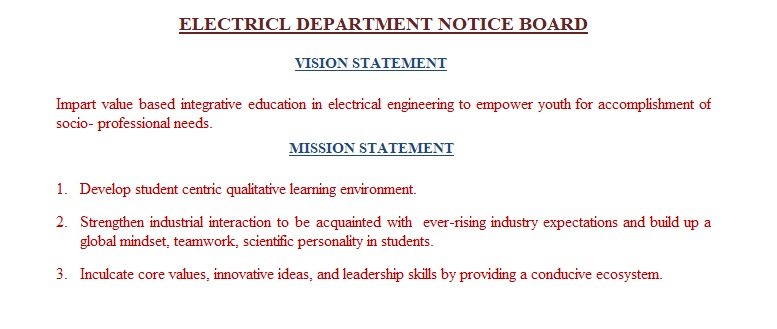Notice: For remaining chapters please go through the question bank uploaded earlier.
|
Sr
no
|
Chapter-7- Tariff
and Economic aspects in power Generation:
|
|
1.)
|
The annual consumption of domestic customer is 1500000
units and annual load factor is 40%. What will be the saving in the average
unit cost, if the load factor improves to 100%? Consider two part tariff :
Rs. 500 per kW of maximum demand per year + Rs. 0.40 per kWh.
|
|
2.)
|
Define (i) Connected load (ii) Plant capacity factor
(iii) Diversity factor (iv) Maximum load (v) Plant use factor (vi) Base load
(vii) Peak load
|
|
3.)
|
A power
station is to supply three industrial loads- whose peak loads are 50 MW,40 MW
and 30 MW. The annual load factor is 0.65 and diversity factor is 1.75.
Estimate the following.
(i)
Maximum demand on the plant
(ii)
Average load
(iii)
Annual energy generated
|
|
4.)
|
Determine load factor at which the cost of supplying a
unit of electricity from a Diesel and from a Steam station is same if the
annual fixed and running charges are as follows :
Diesel Fixed Rs. 300/kW Running Rs. 0.25/kWh
Steam Fixed Rs. 1200/kW Running Rs. 6.25/kWh
|
|
5.)
|
Enlist different types tarrif and explain any three
types of tariff.
|
|
6.)
|
Write different types tariff and explain three part
tariff.
|
|
|
Chapter-9- Photovoltaic
Power Conversion systems:
|
|
1.)
|
Explain working principle of solar photovoltaic cell.
|
|
2.)
|
Draw and explain the I-V and P-V characteristics of
solar photovoltaic cell.
|
|
3.)
|
Explain construction and working of solar distillation
unit with suitable figure.
|
|
4.)
|
Define solar cell and solar array.
|
|
5.)
|
Explain concept of green building using solar energy.
|
|
6.)
|
Explain construction & working of solar
refrigeration plant with suitable figure
|
|
7.)
|
Explain Pyranometer with diagram.
|
|
8)
|
Describe with the help of a neat sketch the working of
solar power plant. What are its salient features?
|
|
9)
|
Explain
present status of photovoltaic system in Gujarat and India.
|
|
10)
|
Discuss
the applications of solar energy.
|
|
|
Chapter-10- Wind
Power Conversion System:
|
|
1.)
|
Derive equation for maximum power of wind turbine.
|
|
2.)
|
Explain in brief geared, direct drive and hybrid Wind
Power Plant and give their comparison.
|
|
3.)
|
Differentiate between Horizontal and Vertical Axis Wind
Turbine.
|
|
4.)
|
Explain construction and working of DFIG.
|
|
5.)
|
Derive the equation for available wind power in terms
of velocity of wind and diameter of turbine rotor.
|
|
6.)
|
Explain various components of wind energy conversion
system with diagram.
|
|
7)
|
Explain
basic principle of wind energy generation.
|
|
8)
|
Explain advantages and disadvantages of wind energy.
|
|
9)
|
Discuss
the points and write the methods of site selection for locating the wind
mills
|
|
10)
|
Define
power coefficient, tip speed ratio and solidity. Discuss their effect on
performance of wind turbine.
|
|
11)
|
What are the major components of wind energy conversion systems?
|
|
|
Chapter-11- Substation:
|
|
1.)
|
Enlist various equipments used in substation.
|
|
2.)
|
Draw and explain pole mounted substation with suitable
figure.
|
|
3.)
|
Explain arc suppression coil earthing in detail.
|
|
4.)
|
What is a transformer sub-station? What are the
different types of transformer sub-stations? Illustrate your answer with a
suitable block diagram.
|
|
5)
|
Draw a
neat layout of a 132/33 KV substation having two 132 KV incoming line &
four 33 KV out going lines. Show essential equipments in the diagram
|
|
|
Chapter-12- Neutral
Earthing:
|
|
1.)
|
Explain reactance earthing in detail.
|
|
2.)
|
Explain arc suppression coil earthing in detail.
|
|
3.)
|
What is Neutral Grounding? List the advantages of
Neutral Grounding.
|
|
4.)
|
Why is neutral earthing necessary in power system? How
can it be classified?
|
|
5)
|
Explain (i) Solid
earthing (ii) Peterson coil earthing.
|
|
6)
|
Explain voltage transformer
earthing.
|

No comments:
Post a Comment